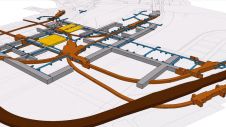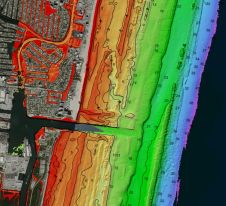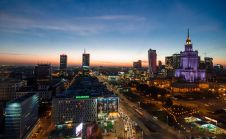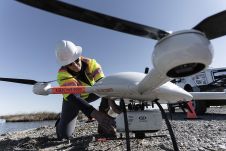Leapfrogging Urban Problems with Smart Cities
保护印度的福祉和经济增长
The upsurge in urban population in Indian cities will intensify societal challenges on every conceivable level. To improve the quality of life and attract investment in cities, proactive measures are now essential for government agencies. They will inevitably become increasingly dependent on geo-ICT in order to develop and manage their assets and infrastructures more efficiently and effectively. This facilitates – and also demands – elimination of ‘silos’ within city authorities. In 2016, India’s government will select 100 municipalities to turn substantial parts of their urbanisations into ‘smart cities’.
城市化的速度如此之高,以至于在15年的时间内将有超过6亿印度公民居住在城市中(如今为3.5亿)。随着世界银行和其他机构对城市人口增长的研究,人道主义区域的需求将增加:水,食品,能源,基础设施,卫生,运输,教育,就业和住房。城市空间必须保持宜居和经济可持续性,因此必须在所有细分市场中进行急剧升级,尤其是为了维持印度经济的增长。城市是每个国家经济增长的动力,印度也没有什么不同。
印度目前近31%的人口居住在城市地区,占印度GDP的63%(资料来源:2011年人口普查)。鉴于城市化的增加,预计城市地区将容纳印度40%的人口,并到2030年产生印度GDP的75%。这需要全面发展物理,机构,社会和经济基础设施。朝着智能城市努力是朝着正确方向迈出的一步。
Spatial information is the foundation of all planned activities and informed decision-making in knowledge-based and policy-driven smart cities – from a city-planning perspective to services offered to the citizens. Therefore, a spatial data infrastructure (SDI) must be the platform for spatial data creation, exchange and use.
国家比赛
2016年,印度中央政府智能City Mission will support 100 cities in their transformation into smart cities, with a focus on the existing ‘brownfield’ cities. (The term ‘brownfield’ describes land previously used for industrial purposes that have become contaminated with hazardous waste or pollution. Once cleaned up, such an area can become a site for urban or commercial development.) The Indian prime minister launched an intra-state competition aimed at compiling a shortlist of candidate smart cities. Those on the shortlist will be required to prepare their proposals for participation in the ‘City Challenge’. Each proposal will be expected to have details of the proposed retrofitting (city improvement – 500 acres), redevelopment (city renewal – 50 acres), greenfield development (250 acres, in a previously vacant area) or a mix thereof. Additionally, there must be a pan-city dimension with ‘smart solutions’, such as an intelligent traffic management system to reduce commuting times, or a wastewater recycling and smart metering system for better water management in the city.
The Smart City Mission provides about US$75 million per city over five years in grants, with a matching contribution from the respective states in India. Hence the total funding available per city is US$150 million over five years. However, this is clearly not sufficient to transform a whole city. Therefore, the smart city projects must be developed as ‘lighthouse’ projects, i.e. as inspiring examples for the whole city. Furthermore, cities must take a ‘smart‘ approach to their project budget and couple the funding with other schemes such as financing, multilateral funding or user fees.
A Step or Two Ahead
Prime Minister Narendra Modi defines his own vision of urban development as one “which is a step or two ahead of people’s aspirations”. Of course, in view of India’s problems – insufficient electricity and water supply, limited affordable housing, high traffic congestion and a high crime rate – one could wonder whether it would not be better to focus first on the basic infrastructure before aspiring towards developing smart cities. But there is also respect for the fact that, instead of setting his mind on providing these basic amenities, the prime minister is striving to achieve a greater goal. He is trying to follow the best practices from across the world and implement them in his country. He is convinced that designing smart cities will also result in the basic amenities for citizens, aided by facilities such as supervisory control and data acquisition (SCADA) systems, GIS mapped infrastructure, water and electricity leakage detection systems, smart parking and traffic management systems, solid waste management systems and wastewater management systems. Other elements mentioned by the prime minister included walk-to-work and cycling schemes. His smart city is sustainable, with equal importance placed on the preservation of the environment and reduction of greenhouse gas emissions.
Limited Spatial Framework
This government programme is good news for the Indian IT industry in general and it especially offers many opportunities in the geo-ICT sector. India does not yet have an authoritative spatial foundation framework. All the government authorities need to organise their infrastructural assets in such a manner that they are ‘GIS ready’. It will be challenging to create a single GIS data warehouse of countless sets of available survey data, maps, images, tabular geotagged development data, cadastral data, etc. For instance, although most of the private utility companies operating in cities have their own GIS data warehouse, the same cannot be said for the city-owned utilities.
Furthermore, the cities have not been surveyed and mapped accurately. While many of them have initiated a city survey for purposes such as property tax, utilities mapping and suchlike, this is usually neither comprehensive nor consolidated. Another important component involves periodically updating the information at predefined intervals.
Every department within the city has so far done its own mapping, so there is now a strong need for single-source location data that can be cross-leveraged by multiple departments. There are already some good examples. In New Delhi, for example, SDI has been used effectively for sustainable development and it has received legal support from the Delhi government in the form of the SDI Act. A few cities, like Bangalore, Hyderabad, Delhi and Kanpur, have a very strong property tax management component built on top of a robust GIS database. They have been using this effectively for years now and other cities are now in the process of setting up a similar system. However, the problem is that the GIS applications and data are maintained for a specific problem/service and are not available holistically for the entire city.
每个印度城市面临的最大挑战是缺乏计划,实施和监视IT驱动或嵌入式项目的技术能力。在创建这种能力的过程中,了解项目的生命周期价值非常重要。它们应该以一种可以对功能结果进行评估的方式,而不仅仅是成本。工作流程分析应确保没有重复的努力,并且评估是所有相关部门的共享资源。
致谢
Thanks are due to PwC India for its contribution to this article.
使您的收件箱更有趣。Add some geo.
Keep abreast of news, developments and technological advancement in the geomatics industry.
免费注册
























